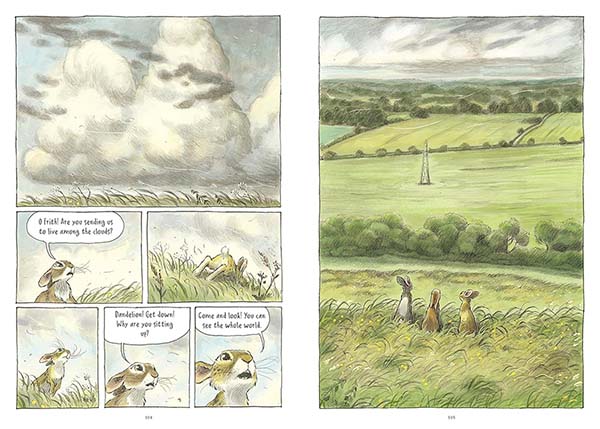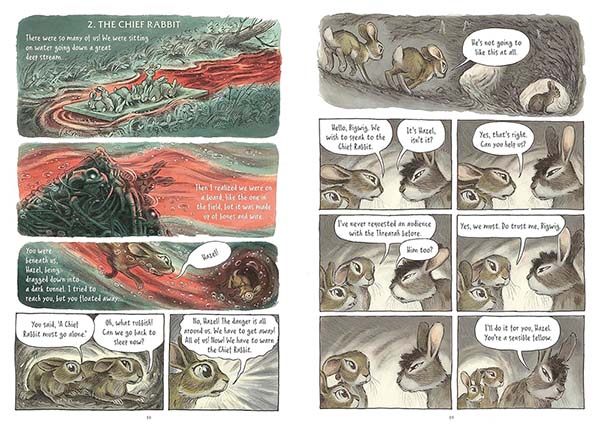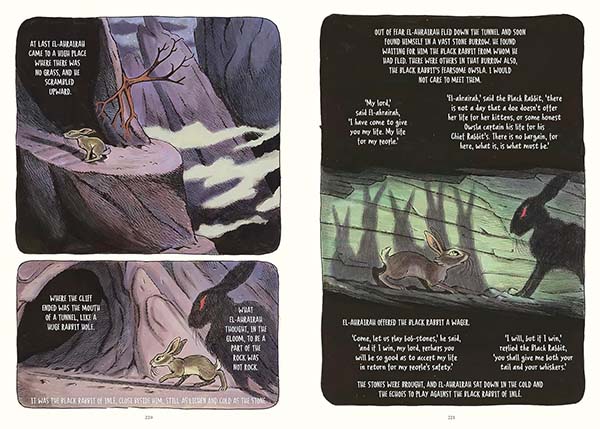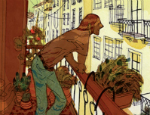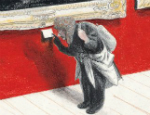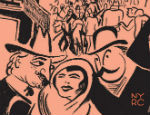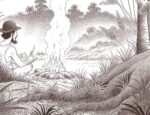The act of retelling a masterpiece can’t be easy. It implies confronting readers with preconceived notions, and the possibility of offending purists. There is an added element of failure that looms large when one is tasked with adapting the masterpiece in question to a new medium. And yet, James Sturm and Joe Sutphin have dared, and come out on top with their graphic version of Richard Adams’s Watership Down. It is an effort that deserves applause.
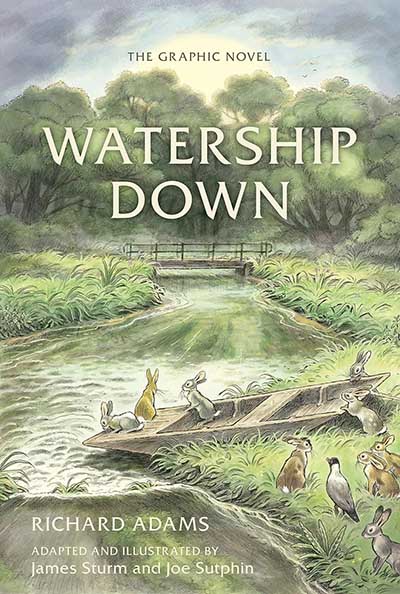
For those familiar with the book, Watership Down has a lot going on. It can be described, rather simply, as the tale of a few rabbits trying to find a new home when human development threatens their burrows. There is so much more to it though: the care with which the personalities of these rabbits has been etched, the all-too-familiar emotions they struggle with, and the overwhelming odds they conquer that made the book an instant classic when it first appeared half a century ago.
It’s easy to see why several artists, across time and media, have attempted to recreate that world. An animated version appeared just six years after the book, followed by two television series, a theatrical adaptation, and even a few parodies. The story of an underdog always lends itself to reinterpretation, but it also makes Sturm and Sutphin’s attempt such a courageous one. They aren’t merely adapting a much-loved novel as a comic; they are also grappling with the ghosts of those other interpretations, all of which have arguably taken the story through every possible narrative hoop over the years.
It begs the question, then: does this adaptation need to exist? The answer is a resolute Yes. First off, the art is a solid reason. There are gorgeous panels here, full of light and delicacy, and two predominant tones — the green brightness of the world above, and the grey hues of an underworld that all rabbits call home. Sturm and Sutphin also manage the incredibly difficult task of bringing these personalities to life. They recently shared insights on how they pulled this off, in an interview. There were visits to the real Watership Down (a hill in southern England, apparently, and several locations used by Adams while writing his story), as well as trips to a wildlife centre to make sure the drawings would be more realistic than what audiences familiar with the animated versions had come to expect. That attention to detail also gently dusts off the darkness that overwhelms collective memories of Watership Down and replaces it with beauty and hope instead.
Another thing in its favour is the stamp of authenticity from Adams’s daughters, the girls who were his original audience. They are the ones who decided it needed to reach a new generation of readers, and hand-picked Sturm and Sutphin for the task.
It’s sometimes easy to forget how Hazel and Fiver, Bigwig, Bluebell, and the rest of this cast are personifying larger forces that were at work when the book was written. It was drawn not just from Adams’s scholarship and familiarity with the classics, but from his experiences with World War II, which goes some way towards explaining how everything beautiful can turn to tragedy in a heartbeat.
Another question that inevitably arises with an adaptation is whether it can be read by someone who isn’t familiar with the original. It can, of course, although the best adaptations are those that nudge a reader towards the source. A graphic edition must, by virtue of its nature, exclude some of the nuances that prose alone can offer. Sturm says as much in his note at the end, explaining why he was compelled to make a few omissions.
All said and done, this is a worthy addition to the bookshelves of anyone who has loved Watership Down. Amusingly, it was hard for Richard Adams to find a publisher because some thought it was too long for children, while others couldn’t imagine adults reading about rabbits. History proves that publishers aren’t always right.
James Sturm & Joe Sutphin • Penguin, £25.00
Review by Lindsay Pereira





